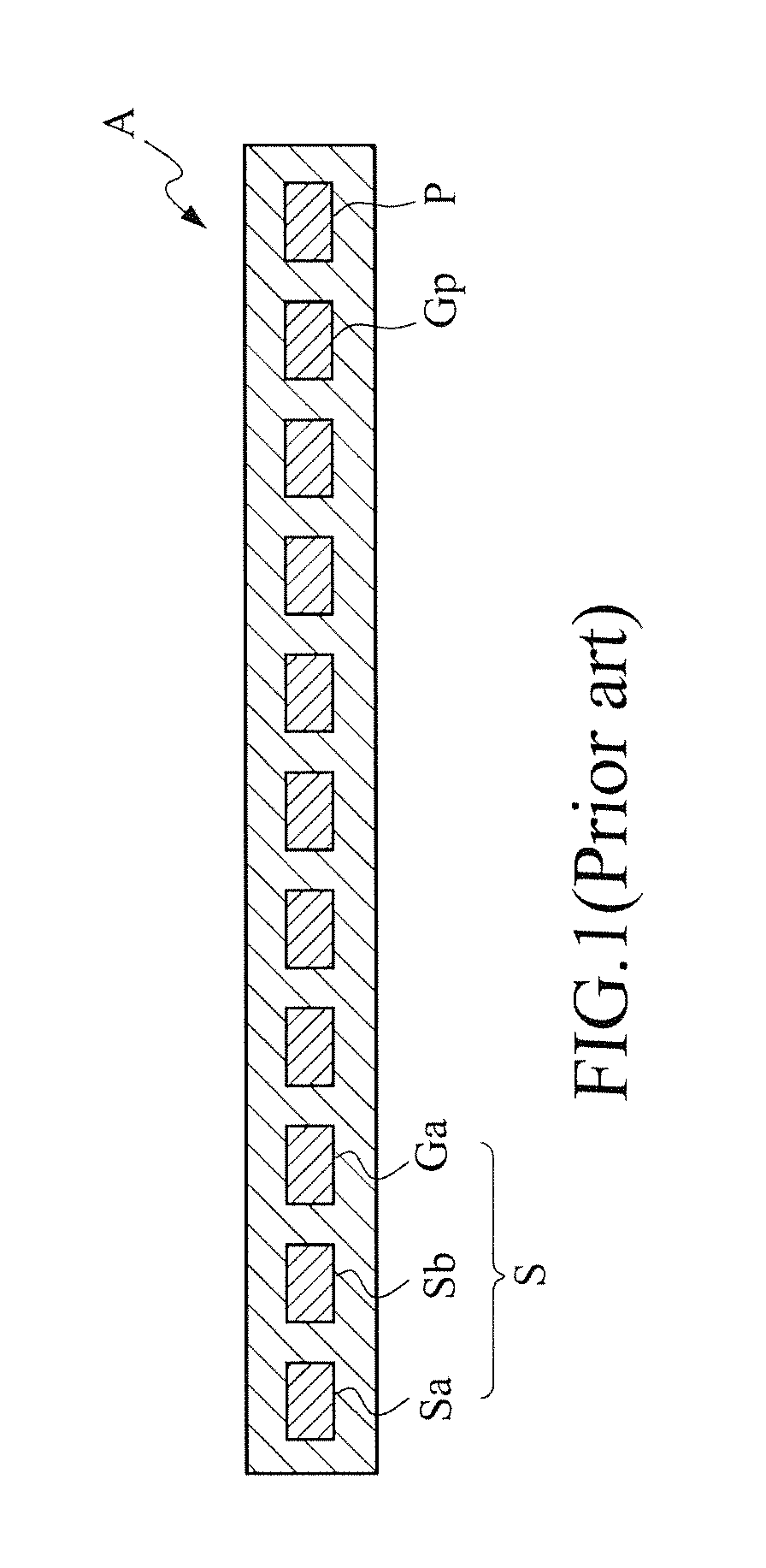Differential mode signal transmission module
a signal transmission module and different mode technology, applied in the direction of cross-talk/noise/interference reduction, cable termination, high-frequency circuit adaptation, etc., can solve the problems of high cost of conventional flexible circuit boards and flexible circuit cables, signal transmission is also susceptible to interference, and the effect of metal shielding layer for shielding electromagnetic noise and eliminating electrostatic discharge is generally poor, so as to reduce the number of conductor wires , the effect of reducing the manufacturing cost of electronic devices and reducing the weight of electronic devices
- Summary
- Abstract
- Description
- Claims
- Application Information
AI Technical Summary
Benefits of technology
Problems solved by technology
Method used
Image
Examples
first embodiment
[0047]Referring to FIGS. 6 and 7, FIG. 6 is a schematic view showing the present invention and FIG. 7 is a cross-sectional view taken along line 7-7 of FIG. 6. The first section 2 and the second section are each formed of a single-sided board. Taking the first section 2 as an example for explanation, the first conductive lines 23 are formed on the circuit board 211. The upper surface of the first conductive lines 23 is covered with an insulation layer 24, the insulation layer 24 forms a holed structure H1 at a location corresponding to the first conductive line 23 connected to the grounding terminal G21, forms a holed structure H2 at a location corresponding to the first conductive line 23 connected to the grounding terminal G22, and also forms a holed structure H3 at a location corresponding to the first conductive line 23 connected to the grounding terminals G23.
[0048]In the first embodiment of the present invention, besides the collective grounding line terminal G2, the first dif...
third embodiment
[0053]In the embodiment shown in FIG. 2, the plurality of conductor wires 13 of the extension section 1 comprise the grounding line G1; the extension connection end 21 of the first section 2 comprises the collective grounding point G2; and the extension connection end 31 of the second section 3 comprises the collective grounding point G3. However, in the present invention (see FIG. 11), arrangements may be made such that the plurality of conductor wires 13 of the extension section 1 comprises no grounding line G1, the extension connection end 21 of the first section 2 comprises no collective grounding point G2, and the extension connection end 31 of the second section 3 comprises no collective grounding point G3, while each of the grounding terminals G21, G22, G23 of the first section 2 is connected by the first conductive connection line 25 to any collective grounding point of an electronic device or can be grounded via the primary grounding terminal Gp2. Similarly, each of the gro...
fourth embodiment
[0054]The extension connection end 21 of the first section 2 can be connected by soldering to the first end 11 of the extension section 1 and the extension connection end 31 of the second section 3 can also be connected by soldering to the second end 12 of the extension section 1. It is apparent that the connection can be done with other suitable means. For example, in the present invention shown in FIG. 12, the extension connection end 21 of the first section 2 and the first end 11 of the extension section 1 are connectable to each other through insertion into a connector 181. The extension connection end 31 of the second section 3 and the second end 12 of the extension section 1 are also connectable to each other through insertion into another connector 182.
PUM
 Login to View More
Login to View More Abstract
Description
Claims
Application Information
 Login to View More
Login to View More - R&D
- Intellectual Property
- Life Sciences
- Materials
- Tech Scout
- Unparalleled Data Quality
- Higher Quality Content
- 60% Fewer Hallucinations
Browse by: Latest US Patents, China's latest patents, Technical Efficacy Thesaurus, Application Domain, Technology Topic, Popular Technical Reports.
© 2025 PatSnap. All rights reserved.Legal|Privacy policy|Modern Slavery Act Transparency Statement|Sitemap|About US| Contact US: help@patsnap.com



